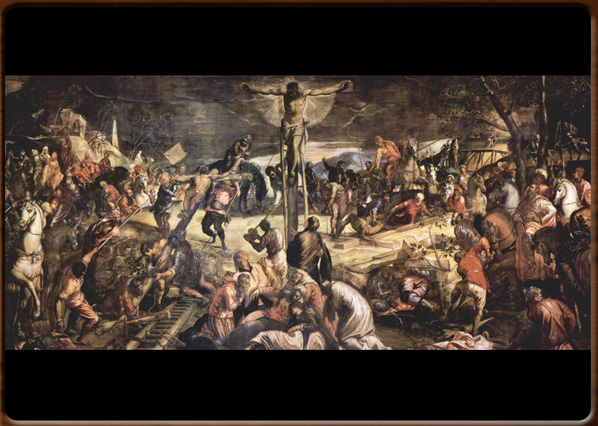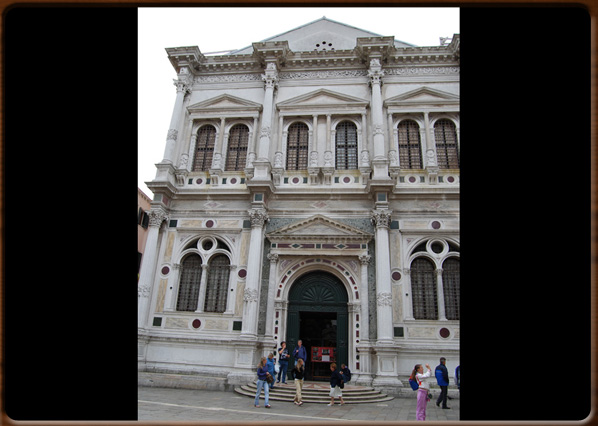
Crocifixion, 1565, Tintoretto

Scuola Grande of San Rocco


No video
The Confraternity of San Rocco decided to build its headquarters in 1516, commissioning Bartolomeo Bon to draw up the plans.
The original design foresaw two rows of columns running across the ground floor ("Sala Terrena") and accommodation on the first floor ("Sala d’Albergo"), an area that could also be used as a meeting room ("Sala Riunioni"). It was subsequently modified and adorned, meaning that actual construction was not completed until 1560 under the direction of various famous “Proto” over the years, including Sante Lombardo, Scarpagnino and Gian Domenico de’ Grigi.
In the 18th century Giorgio Fossati was in charge of the second floor extension, to be used as the treasury (Sala del Tesoro). Restoration of the building in 1999 saw the replacement of the old tiles with sheets of lead.
The many masterpieces contained in the "Scuola Grande di San Rocco" include Titian’s "Ecce homo" and an "Annunciation", two paintings by a young Giambattista Tiepolo, "Agan abandoned" and "Abraham and the Angels" and a "San Rocco" by Bernardo Strozzi.
Another masterpiece is the "Christ the Cross-Bearer" that some attribute to Giorgione, other to Titian, although the possibility of both these grand masters having worked on it cannot be excluded.
1500 - - rev. 0.1.9